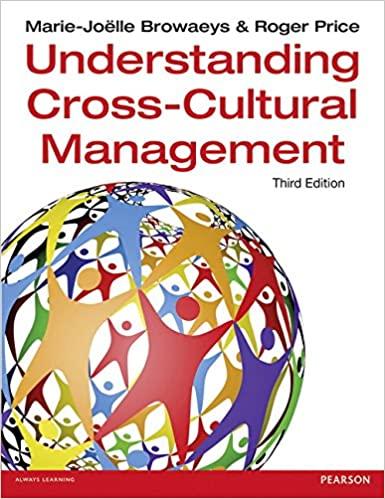Question
Leadership Identity Theory Instructions Researchers (i.e. Komives, Longerbeam, Mainella, Osteen, and Owen) have developed a theoretical framework to help individuals develop their leadership identity. This
Leadership Identity Theory Instructions
Researchers (i.e. Komives, Longerbeam, Mainella, Osteen, and Owen) have developed a theoretical framework to help individuals develop their leadership identity. This emergent grounded theory was comprised of the key category of leadership identity which included the following six leadership identity stages:
- Awareness (Stage One): becoming aware that there are leaders out there who are external to self like the President of the United States, ones mother, or a teacher;
- Exploration/Engagement (Stage Two): a period of immersion in group experiences usually to make friends; a time of learning to engage with others (e.g., swim team, boy scouts, church choir);
- Leader Identified (Stage Three): viewing leadership as the actions of the positional leader of a group; an awareness of the hierarchical nature of relationships in groups;
- Leadership Differentiated (Stage Four): viewing leadership also as non- positional and as a shared group process;
- Generativity (Stage Five): a commitment to developing leadership in others and having a passion for issues or group objectives that the person wants to influence; and,
- Integration/Synthesis (Stage Six): acknowledging the personal capacity for leadership in diverse contexts and claiming the identity as a leader without having to hold a positional role (Komives, et al., 2005).
Komives, et al. discovered that there are four main 'influences' that have the largest impact in each of the above six stages and on our development as leaders:
- Adult influences (i.e. parents, coaches, church leaders, teachers, etc.)
- Peer influences (i.e. friends, teammates, school peers, etc.)
- Meaningful involvement (i.e. scout camp, sports camps, student government, councils, etc.)
- Reflective learning (taking time to process your experiences, etc.)
For this extra credit, please pick one of these four areas (adult influences, peer influences, meaningful involvement, or reflective learning) on how this person, group, and/or experience has impacted your leadership journey (i.e. who you are as a leader, how you view leadership, how you lead, the type of leader you want to become, etc.).
Step by Step Solution
3.33 Rating (150 Votes )
There are 3 Steps involved in it
Step: 1
Based on the provided sources the Social Identity Theory of Leadership emphasizes the importance of ...
Get Instant Access to Expert-Tailored Solutions
See step-by-step solutions with expert insights and AI powered tools for academic success
Step: 2

Step: 3

Ace Your Homework with AI
Get the answers you need in no time with our AI-driven, step-by-step assistance
Get Started


